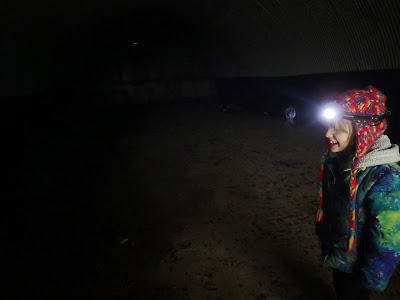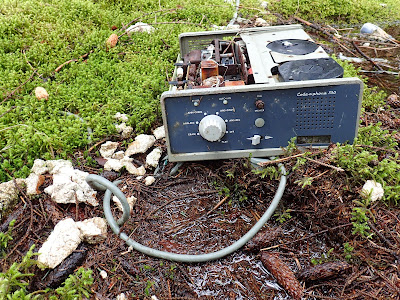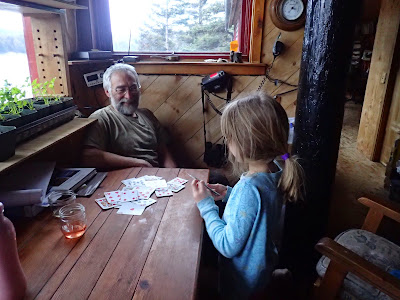Friday, May 29, 2015
Thursday, May 28, 2015
Wednesday, May 27, 2015
Crab Fest
Mother's Day Marzipan Duetsche Kuche mit Schokoladenglasur
Dog show
Fishing town
Crab Fest is good
and fun
This is delicious too! Half-eaten not as good looking, but Abigail approves. She said it tasted like the slingshot ride in your mouth. Crepe with nutella and berries.
Tuesday, May 19, 2015
B to C
Wow, such a short walk on the beach at low tide. Through the woods up the cliff is a lot longer.
I've been sharing my findings with Abigail.
I am not quire ready to share the images of the early gun emplacements. I have kept some images back, for later. I will share the bunk beds though, and...
70 year old tire ruts! Oh yes they are.
It's amazing what you find in the woods. I had to look up what a code-a-phone is.
Is that a Star Wars ship? A lot of the trash from this spot was drug there by a bear. He was clearly going over to Nimitz and dragging back his score, ripping things to shreds. The plastic lives on!
This is much more recent, and a bit out of place because the bear activity was over twenty years old.
2
Memorial Day: Exploring Kodiak’s World
War II remains
“Old Soldiers never die, they just fade
away.”
— General Douglas MacArthur
With the last U.S. World War I veteran
passing in 2011, living memories of World War II are rapidly fading. Soon, just the physical remains of the conflict will be left behind. Kodiak
is home to an astounding number of structures built during World War II. Reports
indicate that $17 million dollars was spent in the construction of Kodiak’s bases.
That is approximately $244,000,000 in today’s dollars! We see evidence of this
activity every day. From the gun barrel near the airport (relocated from Fort
J.H. Smith in Chiniak) to the ready ammunitions bunker at Fort Abercrombie
(site of the Military History Museum), the road system is dotted with reminders
of the era. Some WWII buildings are
well-preserved and some are still in use by the U.S. Coast Guard. Others are
partially collapsed. Most often, only the moss covered foundations or
depression where buildings was once stood survive.
Memorial Day weekend is a great time to
explore Kodiak’s military history. Fort Abercrombie, with its helpful signage
is the most accessible place to start. Miller Point not only offers an awesome
panoramic view and photo op of Monashka Bay and Spruce Island, but a ready
ammunitions bunker, two fixed gun emplacements, a distant electrical control
bunker, light shelter, and plotting and spotting room are all nearby. Piedmont
Point just southeast of Miller Point was the location of a radar site. Like
many other industries and technologies, the use of radar advanced rapidly
during the war. Even if WWII history is not your thing, the virgin spruce
forest, dramatic sheer bluffs and budding wildflower meadows are worth the walk.
If you are feeling more adventurous,
some the earliest sites at former Fort Greely are different than the mammoth
concrete bunkers and rectangular Quonset huts of post-1942. More organic in
shape, with construction materials of wood, chicken wire, and roof tarp, these
hand-made structures are sometimes perplexing. The earliest semi-subterranean gun
emplacements, located in Buskin River State Recreational Site, have a large
entry with small side rooms. This design reminds me more of an ancient Alutiiq ciqlluaq (sod house) more than a
military building.
When I am alone appreciating these
sites, I feel connected to the men who served our country. Like me, they were
cold and wet, but they could not go home, have dinner with their parents, kiss
their sweetheart, eat an apple from the orchard down the road, or hang out at
the local malt shop. Instead, in the early days in Kodiak, they were carrying
heavy screw pickets, stringing barbed wire along beaches and hillsides to
prevent Japanese forces attacking their gun positions. Taking afternoon breaks
in small single room bivouacs talking about home over a cup of joe. At night, they
slept in diminutive hand-made bunks in tents, or if lucky, a wood structure
with a stove and windows.
While you are out exploring, learning or
remembering, it is important to consider that these historic sites are
protected by State law. While some are on public land, many are on private
land. I advise you, your friends and family to not walk into the depressions or
foundations of former structures. A nail through the shoe is not fun. I learned
this the hard way. Likewise, moss has taken over many of the sites and under
the moss is shattered glass, rusty metal, broken pieces of dimensional lumber
and other contaminants. Although a lot of environmental remediation has
occurred, it’s not complete. Deep in undocumented territory, I was on my knee
photographing one of the numerous depressions, only to find I was kneeling on a
decayed drum with ancient paint labeled ”flammable” with a hand painted skull
and crossbones. Sigh. Being bear aware
is also important. Old roads are now waterways and bear trails. I talk a lot to
let any bears know I am in their territory, I carry bear spray, and I know what
I am supposed to do if I encounter a bear.
Connecting with Kodiak’s history can be
rewarding in many ways. I think of it as an added bonus to the majestic natural
beauty of our island. On one trip I can tide pool with my daughter, watch
eagles soar, or see if we both come up with the same count of how many concrete
footings it took to hold up a mess hall. It brings up conversation you might
not expect. On one of our expeditions, my daughter surprisingly asked me, “Why
do we have war?”
Abigail looking in
a possible foxhole. At this particular beach, picket screws and barbed wire
were employed to help prevent Japanese troops from attacking the fixed gun
emplacements on top of the cliff.
Monday, May 11, 2015
Gourmet
Quiet times to send notes.
Play games with awesome person.
Eat fabulous food.
Explore mother trees.
Banya
Steamy
Subscribe to:
Posts (Atom)


















































